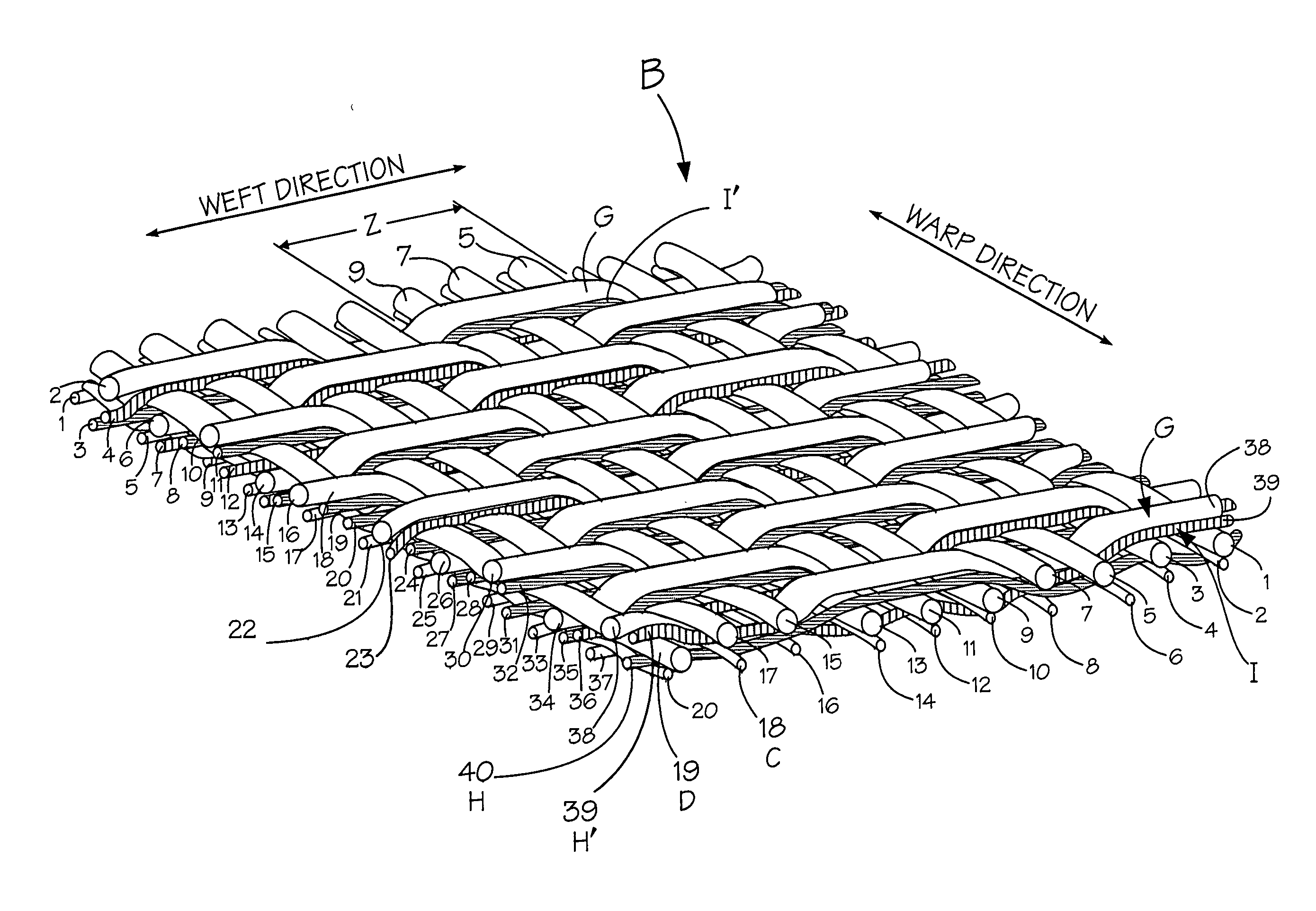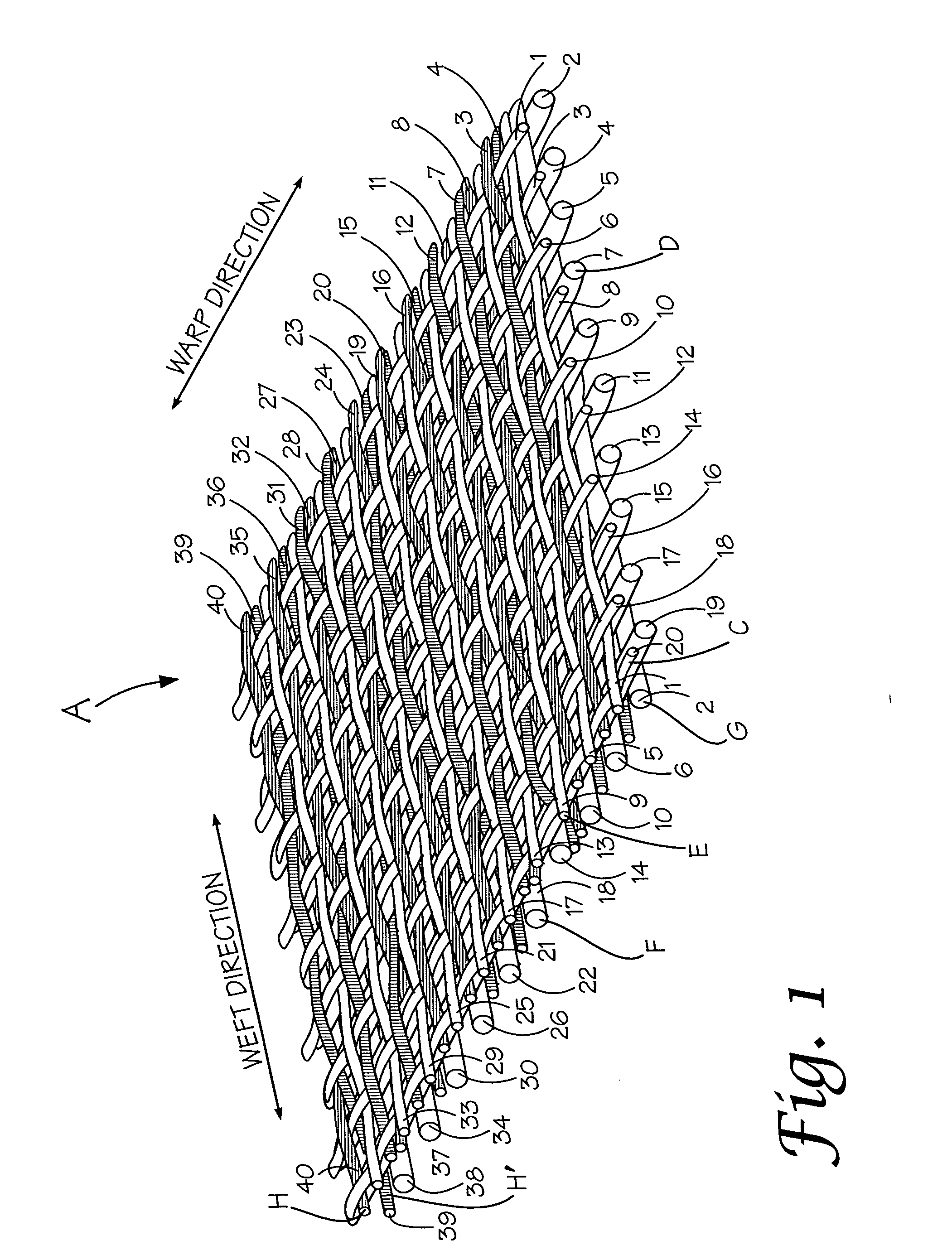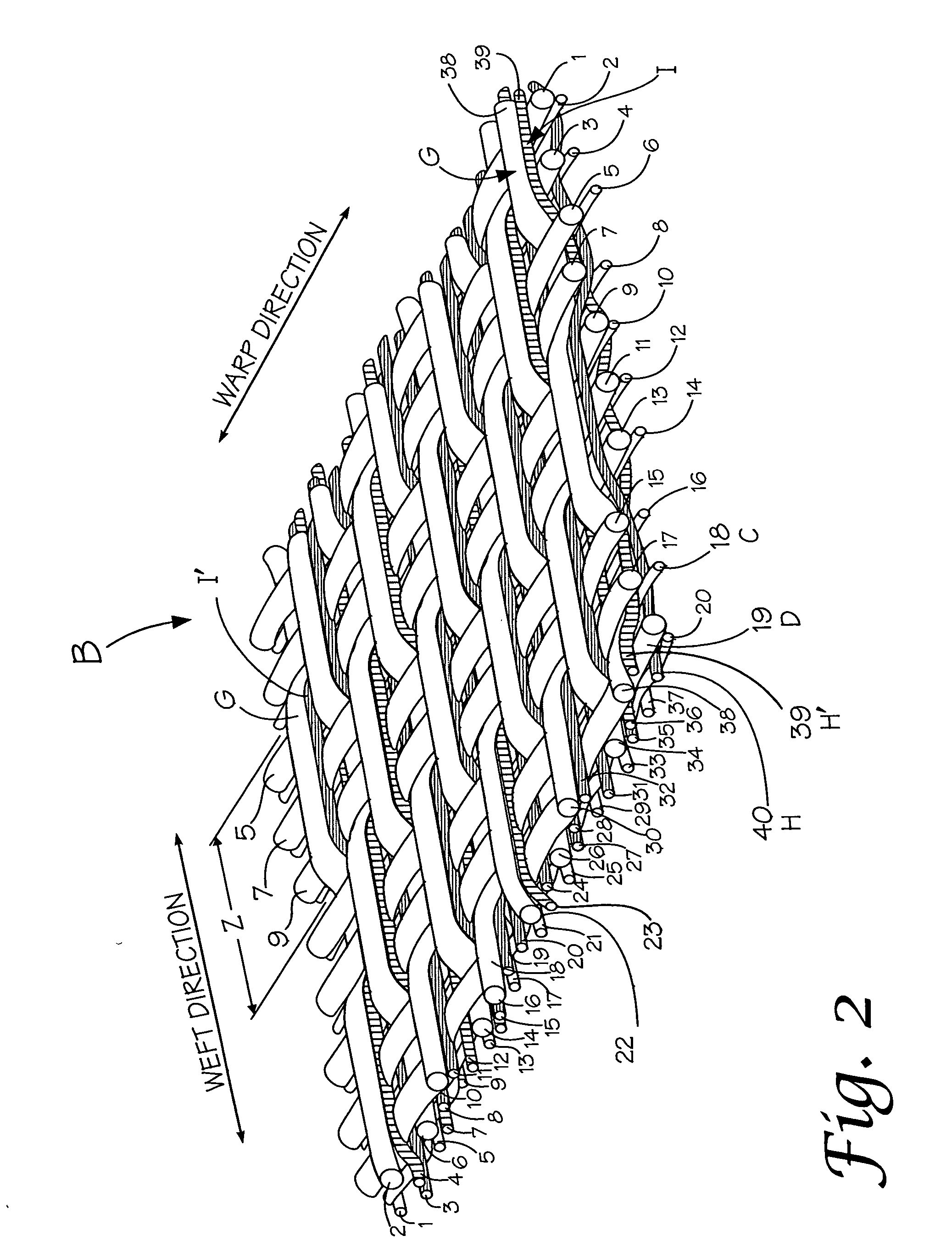Composite papermaking fabric
a papermaking fabric and composite technology, applied in the field of composite papermaking fabrics, can solve the problems of increased wear and the inability to protect certain areas along the length of the binding
- Summary
- Abstract
- Description
- Claims
- Application Information
AI Technical Summary
Problems solved by technology
Method used
Image
Examples
Embodiment Construction
[0029] In composite papermaking fabrics a primary concern is wear on the contact surface and more particularly wear of the binding yarns due to contact with the machine rollers. In order to lessen wear of the binder yarns steps are taken to shield them from contact with the machine rollers while maintaining an even support surface, good fabric stability and drainage.
[0030] In the instant case, generally a portion of the yarns forming the lower or contact fabric are preferably of a wear resistant synthetic material such as nylon and have a larger diameter than the remainder of the yarns. Preferably the contact fabric yarns are between 0.15-0.30 mm in diameter with about 0.19 mm being the preferred size for the warp yarns and 0.30 mm being the preferred size for the weft yarns.
[0031] The support or upper fabric is preferably woven with more stable yarns such as polyester although nylon may also be used. The yarn diameters for the upper or support fabric is between 0.08-0.25 mm with ...
PUM
 Login to View More
Login to View More Abstract
Description
Claims
Application Information
 Login to View More
Login to View More - R&D
- Intellectual Property
- Life Sciences
- Materials
- Tech Scout
- Unparalleled Data Quality
- Higher Quality Content
- 60% Fewer Hallucinations
Browse by: Latest US Patents, China's latest patents, Technical Efficacy Thesaurus, Application Domain, Technology Topic, Popular Technical Reports.
© 2025 PatSnap. All rights reserved.Legal|Privacy policy|Modern Slavery Act Transparency Statement|Sitemap|About US| Contact US: help@patsnap.com



